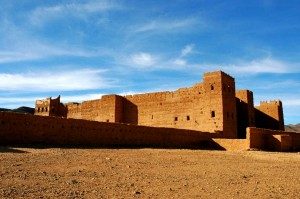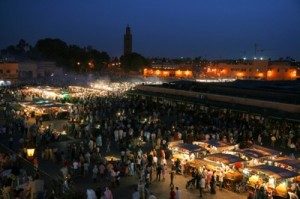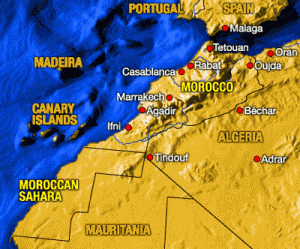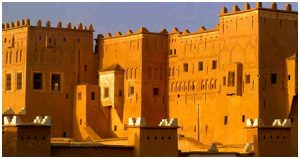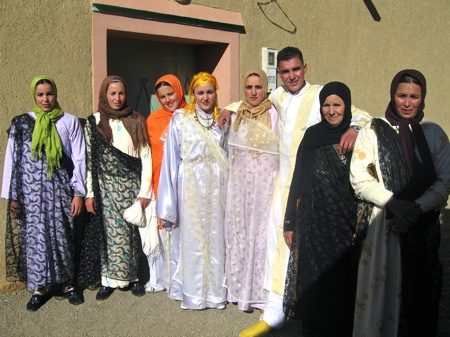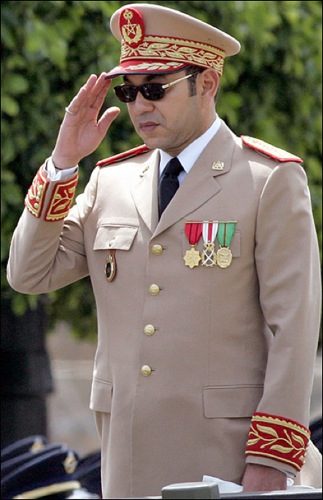Ouarzazate has always been a cultural meeting place and melting pot for the various peoples…
Tag: Draa Valley
The Draâ Valley is Morocco’s longest river. It’s formation is that of the Dades River and Imini River and flows from the High Atlas Mountains southeastward to Tagounit and from Tagounit mostly westwards to the Atlantic Ocean somewhat north of Tan-Tan. The water from the Draâ is used to irrigate Palmeraies and small horticulture along the river. The inhabitants of the Draâ are called Drawi, used to refer to the dark skinned people of Draâ that make up the largest portion of its inhabitants. The Draa Valley originally was known as the Valley of Olives but when the 19th Century caravans passed through the date palms arose within the trails they traveled. The palms proved to be a better choice to continue as a grown commodity because they bare dates, are used to make baskets, leafy carpets and over shade for the inhabitants.
Things to do in Marrakech. The Top 10 Things to do in Marrakech, Morocco is a hot list of activities and experiences that one can do alone, with their spouse or friends and family in this majestic “red hamra” city. The most popular activities typically included spending time in and around Marrakech along with a brief departure for a High Atlas Tour or a Sahara Tour.
Give us 10 Days and we will give you 10 Reasons to Visit Morocco. A Trip to Morocco will offer a once in a lifetime experience that is not to be missed! Morocco is a moderate Muslim country in North Africa known for it’s fascinating Imperial Cities, its majestic Sahara Desert, Berber villages, waterfalls, ancient Kasbahs and charming seaside towns. From region to region any Moroccan traveler will be stunned by Morocco’s varied landscapes, its souks, gardens, monuments, mosques, palaces and vibrant street life. Morocco is also a country known for it’s fantastic food and aromatic spices.
For anyone interested in touring Morocco’s kasbahs or ksars, I highly recommend starting with Kasbah Taourirt, the Pasha Glaoui’s former palace in Ouarzazate. Kasbah Taorirt was built by the Pasha Glaoui. Its location was strategic for trading routes and in the 1930’s when the Glaoui ruled the South was then considered one of Morocco’s largest Kasbahs. Kasbah Taourirt was one of the places Glaoui kept his slaves. As a Moroccan traveler you can explore its nooks and crannies to discover its history and often local female painters who sell their art inside as well as the many quality silver shops just steps outside the Kasbah.
Berber Tours to Morocco are authentic way to Discover a Berber Village, visit ancient kasbahs and camel trek in the Sahara Desert. Discover a Berber Village is a Southern Morocco Cultural Tour that is an EXCLUSIVE Travel Exploration Morocco. Discover a Berber Village is a historical journey where Moroccan travelers can have an up close and authentic experience in a Moroccan, Berber Village while visiting the Ouarzazate and Zagora regions of Morocco. When traveling to Morocco, a Morocco vacation is not complete without visiting Morocco’s indigenous people and discovering its Berber Villages. A Berber Tour to Morocco is the most important Moroccan voyage for those who are interested in Morocco’s history and old world traditions.
Morocco Travel News, King Mohammed VI of Morocco visited the Ouarzazate region today, passing through the main street, Rue Mohammed VI. The King was in the Saharian town of Errachidia prior to his arrival in Ouarzazate. King Mohammed VI of Morocco’s final destination for the day was his villa in The Royal Golf, juxtaposed near Lake El Mansour.
Traveling to Morocco’s Sahara region through a Ouarzazate Travel Agency guarantees an authentic Morocco Travel experience. When traveling to Morocco’s Zagora region of Ouarzazate, the Draa Valley and the M’hamid Sahara Desert (Erg Chegaga Dunes) it is important to also have a Ouarzazate or Saharan driver and licensed guide who speaks fluent English, Arabic & French as well as the local dialect of Berber (Tashlhiyt)
Dates have played an important part in Moroccan cuisine for thousands of years. Archaeological evidence…


